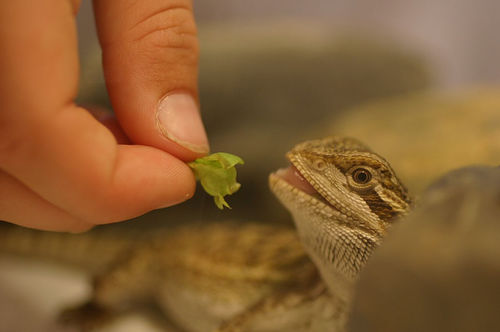Bearded Dragon Lighting: A Beginner's Guide to Keeping Your Pet Happy and Healthy
Bearded Dragons: The Perfect Pet for Beginners

Bearded dragons are popular pets among reptile enthusiasts. They are friendly, docile, and relatively easy to care for, making them perfect for beginners. However, taking care of a bearded dragon also requires knowledge and attention, especially when it comes to their lighting needs. In this beginner’s guide, we will talk about everything you need to know about bearded dragon lighting and how to keep your pet happy and healthy.
Why Do Bearded Dragons Need Special Lighting?
Lighting is crucial for bearded dragons because they are cold-blooded animals that depend on external sources of heat to regulate their body temperature. In the wild, bearded dragons spend a lot of time basking under the sun to absorb heat and UVB rays. These rays help them produce vitamin D3, which is essential for their bone and immune system health. In captivity, bearded dragons need artificial lighting that mimics natural sunlight to meet their needs.
The Two Types of Bearded Dragon Lighting
There are two types of lighting that you need to provide for your bearded dragon: heat and UVB lighting. Heat lighting provides warmth for your pet, while UVB lighting provides the essential UVB rays that they need. Both types of lighting are equally important and should be provided for at least 10-12 hours per day.
Heat Lighting
Heat lighting can come from a variety of sources, but the most common one for bearded dragons is a basking bulb. Basking bulbs emit a high-intensity heat that allows your pet to regulate their body temperature by moving closer or farther away from the bulb. You should place the basking bulb in a spot that your bearded dragon can easily access and bask under, but also allow them to move away if it gets too hot. The temperature under the basking spot should be around 100-110°F (38-43°C).
UVB Lighting
UVB lighting is crucial for the production of vitamin D3, which helps your bearded dragon absorb calcium and maintain strong bones. UVB bulbs should be placed in a fixture above your pet’s enclosure, and the distance between the bulb and your pet should be around 12-18 inches (30-45 cm). Bearded dragons need UVB lighting for at least 10-12 hours a day, and the bulb should be replaced every 6-12 months, even if it still emits light.
Choosing the Right Lighting Setup for Your Bearded Dragon
Now that you know the importance of bearded dragon lighting, it’s time to choose the right setup for your pet. There are several factors to consider when choosing lighting, such as the size of your pet’s enclosure, the type of bulb, and the distance between the bulb and your pet.
Enclosure Size
The size of your bearded dragon’s enclosure will determine the wattage of bulbs you need. For example, a 40-gallon tank may require a 100-watt bulb, while a 100-gallon tank may require a 150-watt bulb. Make sure to measure the length, width, and height of your enclosure to determine the appropriate size of bulbs.
Type of Bulb
There are different types of bulbs that you can choose from for your bearded dragon, such as mercury vapor bulbs, fluorescent bulbs, and ceramic heat emitters. Each type has its advantages and disadvantages, so make sure to do your research and consult with an expert before making a decision. Mercury vapor bulbs are the most popular and convenient option as they provide both heat and UVB in one bulb.
Distance Between Bulb and Pet
The distance between the bulb and your pet is crucial for the proper distribution of heat and UVB. If the bulb is too far, your pet may not receive enough heat and UVB, while if the bulb is too close, your pet may get burned. Make sure to follow the manufacturer’s instructions regarding the recommended distance between the bulb and your pet.
Maintaining Proper Bearded Dragon Lighting
Proper lighting is not a one-time setup; it requires regular maintenance to ensure that your pet is getting the right amount of heat and UVB. Here are some tips to help you maintain proper bearded dragon lighting:
- Clean the bulbs and fixtures regularly to prevent dust and debris from blocking the light.
- Replace the bulbs every 6-12 months, even if they still emit light.
- Monitor the temperature and humidity levels inside the enclosure using a thermometer and hygrometer.
- Adjust the distance between the bulbs and your pet according to the manufacturer’s instructions.
- Consult with an expert if you notice any signs of health issues, such as lethargy, lack of appetite, or discolored skin.
Conclusion
Bearded dragon lighting is essential for the health and well-being of your pet. By providing the right amount of heat and UVB, you can ensure that your bearded dragon is happy, healthy, and thriving. Remember to choose the right size, type, and distance for your bulbs, and to maintain them regularly to prevent health issues. With proper care, your bearded dragon can be your loyal companion for years to come.
